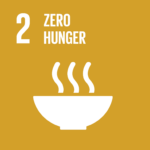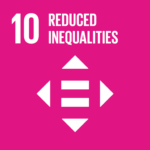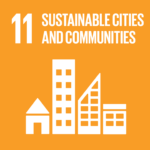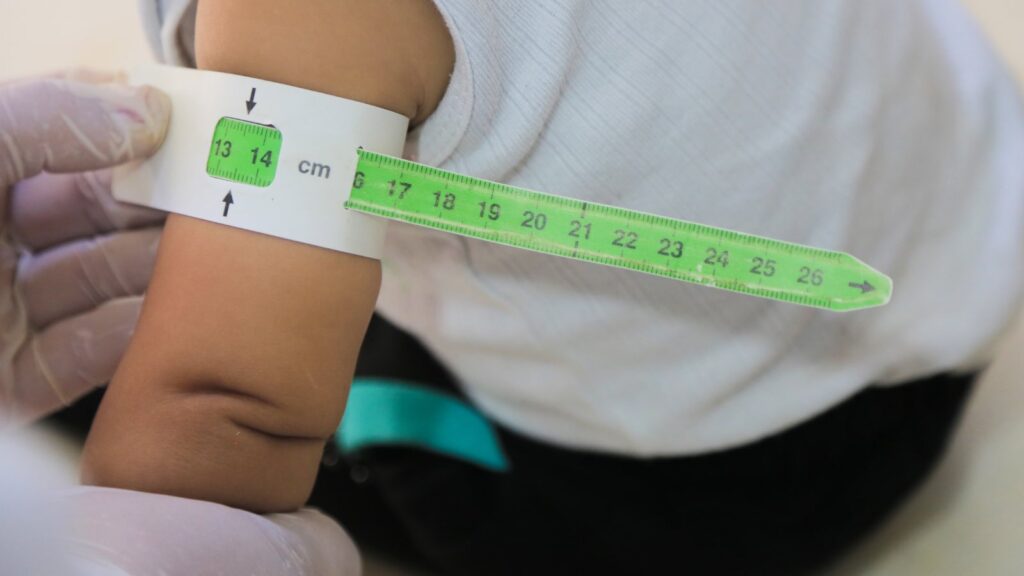Acute food insecurity and malnutrition rise for sixth consecutive year in world’s most fragile regions.
SINGAPORE — Climate change is rapidly intensifying malnutrition among children in Asia, placing millions at risk of stunted growth, weakened immunity, and irreversible cognitive damage, the United Nations Children’s Fund (UNICEF) has warned.
At the heart of the crisis are fragile food and health systems now under greater strain from more frequent extreme weather events—making it clear that climate action can no longer be separated from child health and nutrition.
RELEVANT SUSTAINABLE GOALS




The Hidden Cost of Climate Breakdown: Childhood Malnutrition
“Climate change is putting pressure on health systems. It is increasing the prevalence of infections, which drain children’s bodies of vital nutrients,” said Roland Kupka, UNICEF’s regional nutrition adviser for East Asia and the Pacific. He spoke on May 6 at Ecosperity Week in Singapore, an annual sustainability forum hosted by Temasek.
Kupka explained how climate disruption is damaging not just crop yields and food distribution, but also the very building blocks of child development.
“At the same time, climate change is impairing food systems,” he said. “We see decreases in the quality and quantity of food. It’s hard to talk about climate action without putting children, and children’s nutrition, at the center of those efforts.”
19 Million Children Undernourished—And Counting
Despite the region’s rapid economic growth, Asia remains home to approximately 19 million chronically undernourished children. Kupka underscored how this form of malnutrition is quietly stunting both physical and cognitive development in a generation already growing up in increasingly unpredictable environments.
“It’s not just about not getting enough to eat,” he said. “We also see widespread deficiencies in essential vitamins and minerals—and, simultaneously, a rise in childhood obesity. These dual trends paint a complex picture of malnutrition.”
Key drivers of acute food insecurity and malnutrition:
- Conflict remained the top driver of acute food insecurity, affecting around 140 million people in 20 countries and territories. Famine has been confirmed in Sudan, while other hotspots with people experiencing Catastrophic levels of acute food insecurity include the Gaza Strip, South Sudan, Haiti, and Mali.
- Economic shocks including inflation and currency devaluation, drove hunger in 15 countries affecting 59.4 million people – still nearly double pre-COVID 19 levels despite a modest decline from 2023. Some of the largest and most protracted food crises were primarily driven by economic shocks, including in Afghanistan, South Sudan, Syrian Arab Republic, and Yemen.
- Weather extremes particularly El Niño-induced droughts and floods, pushed 18 countries into food crises affecting over 96 million people, with significant impacts in Southern Africa, Southern Asia and the Horn of Africa.
UNICEF advocates a multi-pronged solution: access to diverse diets, quality health services, and evidence-based practices. But realizing this at scale will require significant shifts in funding, governance, and public-private collaboration.
Financing Gaps Slow Progress
One of the greatest barriers to addressing malnutrition, according to Kupka, is inadequate and poorly targeted financing.
“There is a need for new mechanisms to assess the actual financing requirements and incentivize the production of nutritious foods where they are needed most,” he said.
In response, UNICEF has launched the Child Nutrition Fund, which aims to accelerate the implementation of sustainable programs, policies, and local supply chains to tackle child undernutrition globally—and particularly in Asia.
“We feel that has real promise,” Kupka said. “But funding must be sustained, strategic, and focused on scalable outcomes.”
While governments are central to long-term progress, Kupka emphasized they cannot shoulder the burden alone.
“It’s the duty of governments to protect the rights of their citizens by putting in place the right policies and programs,” he said. “But philanthropists can complement those efforts. They have the freedom, speed, and agility to experiment with new models that governments can then adopt.”
This call for cross-sector collaboration reflects a growing recognition that nutrition, climate resilience, and public health are interlinked challenges that demand interlinked solutions.
Asia’s Opportunity to Lead
Despite the daunting scale of the crisis, Kupka sees potential for Asia to lead the way—not just in adaptation but in innovation.
“This region can avoid many of the mistakes made in other parts of the world,” he said, pointing to missed opportunities in preparing food systems for climate shocks elsewhere. “Asia is rich in innovation. If it combines that strength with smart adaptation, it can truly become a global leader in climate action and child nutrition.”
As the effects of global warming ripple through every level of society, children—especially those in poor, rural, and coastal communities—are emerging as the most vulnerable victims of climate change.
UNICEF’s warning is a call not just for compassion, but for investment, policy reform, and innovation. Without decisive action, a generation of children in Asia could grow up undernourished, underserved, and ill-equipped for the challenges ahead.
But with the right interventions, the region can flip the narrative—from crisis to opportunity, from vulnerability to resilience.
“We need to place children where they belong: at the center of climate and development agendas,”
Roland Kupka, UNICEF’s regional nutrition adviser for East Asia and the Pacific
Lead image courtesy of Mohammad Bash from Getty Images (image of Malnutrition)
You may also be interested in :
Climate Change: A Growing Threat To Children’s Safety and Future




